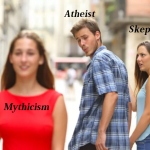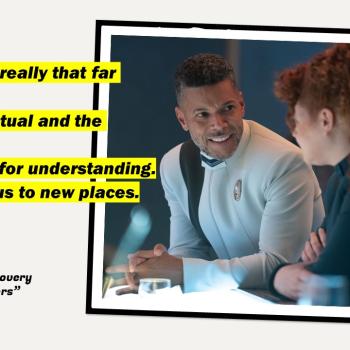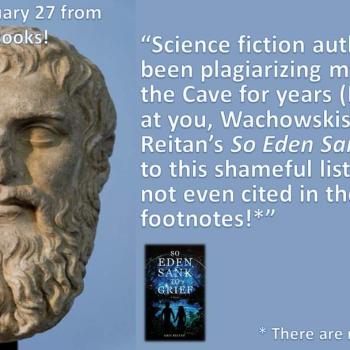I know, I know. The title of the piece was “Using Star Trek to Teach Rabbinics.” How could it have taken me so many weeks to get around to blogging about it? In my defense, I was traveling when the piece appeared and I knew I should mention it here on my blog rather than merely circulating it on social media. Rebecca Kamholz writes:
What I finally realized was that there is a genre familiar to us in modern life that closely parallels the form and flow of the Talmud: the internet discussion board. Specifically, an internet discussion board for a deeply involved and passionate fandom.
Read the whole thing. I particularly want to draw attention to the end of the piece, which emphasizes the value of assigning reading to students that will be above what it is realistic to expect them to understand at that point (as long as your approach to grading takes that into consideration).
Related to the above, Peter Gainsford blogged about Homeric hymns and Star Trek: The Next Generation. Below are some other things I have seen lately that intersect in some way with the theme of this post, namely academics engaging with or using science fiction and/or fantasy in ways that relate to our educational endeavors:
https://www.ancientblogger.com/2018/06/superheroes-in-antiquity-classicsandcomics/
AVClub had an interesting piece about 2001. Here’s an excerpt:
So much money and care went into making 2001, and all of it was in service of a bugged-out art film with no clear story arc, no recognizably human performances, and an ending that seemed designed to short-circuit viewers’ brains. Like many of the other blockbusters that came before it, 2001 worked as grand spectacle. But it also worked as a rebuke of those previous spectacles. John Huston’s The Bible: In The Beginning…, the biggest hit of 1966, had grappled with similar questions about the infinite, and it had done it in similarly formless and episodic style. But The Bible looked like a movie. And even if Huston himself wasn’t religious, The Bible was clearly a religious work. 2001, on the other hand, was actively antagonistic to literal religion. It was a whole different creation myth.
As you might imagine, nobody had any idea whether a movie like that would resonate. At the film’s New York premiere, Arthur C. Clarke left in tears at the intermission, crushed by how many people had already walked out or talked through it.
And on the music of 2001 and discovering Richard Strauss that way, see this post on the Land of Lost Content blog.
A piece on Star Trek and physics from a speaker that has appeared at Starbase Indy.
There are plans to celebrate the anniversary of the Matrix, and plans for a new Matrix movie!
Sean Carroll’s Mindscape Podcast: Seth MacFarlane on Using Science Fiction to Explore Humanity
https://www.starwars.com/news/star-wars-myths-fables-george-mann-interview
https://www.starwars.com/news/from-a-certain-point-of-view-was-obi-wan-right
Clara Bosak-Schroeder reviewed Adrienne Mayor’s book Gods and Robots: Myths, Machines, and Ancient Dreams of Technology in Bryn Mawr Classical Review.
We also apparently have learned pronunciation from Star Trek – more specifically, Star Trek has influenced how we say “data.”
Travis Perry talked about the serious business of science fiction
And finally, lest this post seem too sectarian, having started with Star Trek and Rabbinics, to bring balance to the post (if not necessarily to the Force), here’s this:
You can get the mug on Amazon. You might also like this quiz asking if you can distinguish between quotes from Yoda and from rabbis, which is fun if only to see the way the creators of the quiz “yodafied” the wording in order to make it challenging.















